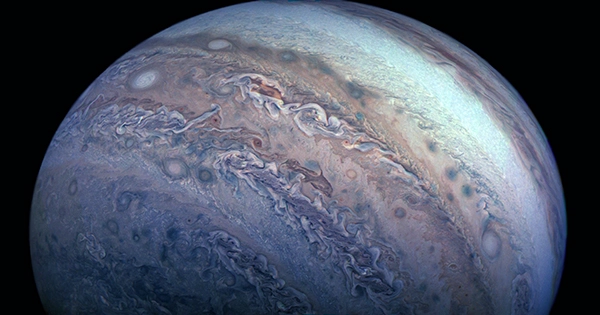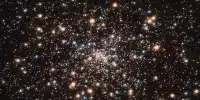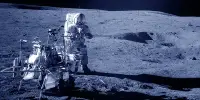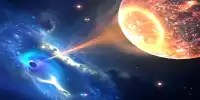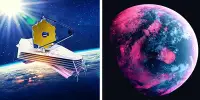The “frosted cupcake” clouds of Jupiter are seen in all their splendor in new 3D representations produced by a group of amateur scientists using Juno data. However lovely they may seem, you don’t want to get sucked into this astronomically strong storm.
A group of citizen scientists revealed the astounding findings this week at the Europlanet Science Congress 2022 in Granada.
Data from JunoCam, the Juno spacecraft’s visible-light camera, was used to produce the photos. This collection of information was gathered during Juno’s 43rd close flyby of the gas giant, which it has been orbiting since 2016.
The JunoCam was first installed on Juno primarily for the goal of taking stunning pictures of Jupiter to draw in the public. It certainly accomplished the job, but it also managed to produce some work of genuine scientific merit.
We now have a chance to see Jupiter in a way that is practically unavailable by Earth-based telescopic observations thanks to the Juno spacecraft. We can quickly examine the same cloud properties from a variety of perspectives, according to Dr. Gerald Eichstädt, a mathematician and software developer who worked on the project.
As a result, it is now possible to create 3D elevation models of Jupiter’s cloud tops. The photographs of Jupiter’s beautiful chaotic storms, which depict clouds rising at various altitudes, seem to come to life.
Jupiter frequently seems smooth and marble-like in images of the planet’s swirling storm clouds. These pictures reveal that the ferocious clouds truly have peaks and valleys like a rough mountain range. Clouds in the upper atmosphere get the most intense sunlight, but as it descends, more and more of it is absorbed.
According to theoretical models, the clouds should be made up of a variety of chemical species, including water ice, ammonium hydrosulphide, and ammonia, from top to bottom, said Dr. Eichstädt. The theoretical predictions will be tested and refined once our data has been calibrated owing to additional measurements of the same cloud tops, and we will then have a better 3D image of the chemical composition.
Jupiter’s radius is 69,911 kilometers (43,440.7 miles), which is 11 times larger than Earth’s. It is by far the largest planet in our Solar System, and its clouds are as enormous.
According to earlier research by Juno, some of these clouds reach as far as 3,000 kilometers (1,900 miles) into the globe. That is a greater distance than the US’s northern and southern boundaries.
The planet’s famous Great Red Spot, the greatest storm in the Solar System, is likewise enormous, with a diameter of 6,000 kilometers (nearly 10,000 miles) and a depth of up to 500 kilometers (310 miles).
